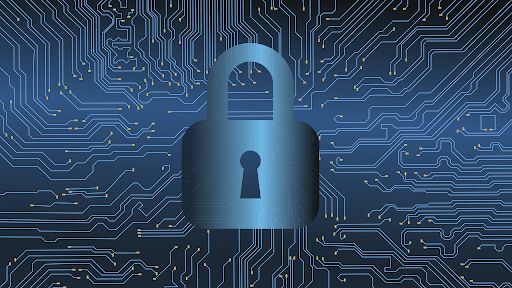Use of Artificial Intelligence in Cybersecurity
Artificial Intelligence (AI) can help maintain cyber security and guard against digital assaults. However, using machine learning hackers can thwart security algorithms by morphing the data they train on. Programmers can likewise utilize AI to get through safeguards and firewalls.

Artificial Intelligence (AI) can help maintain cyber security and guard against digital assaults. However, using machine learning hackers can thwart security algorithms by morphing the data they train on. Programmers can likewise utilize AI to get through safeguards and firewalls. These AI based programs create mutating malware that changes its structure to keep away from discovery. How helpful AI algorithms can be for detecting and shielding against vulnerabilities and threats by automating the detect-and-response process. The concerns have been raised that utilizing AI for hostile purposes may make cyber-attacks hard to impede or guard against by empowering quick transformation of malware to change in accordance with limitations forced by countermeasures and security controls.
Nowadays, we are facing a huge debate about the upraising question on the good or bad impact of Artificial Intelligence (AI) on our life. The number of enterprises is going high those are using AI to fulfill their needs. Along with this, we should also need to focus on the implementation impact of AI in the field of cybersecurity.
Cyber-attacks, especially against financial companies and digital banks cause enormous loss of money. According to the top financial or security organizations, 2 million cyber-attacks were performed snatching $45 billion in 2018 and it is feared that such attacks if stay unchecked will cause a $6 trillion loss by 2021.
Humans can't handle the high-speed processes and huge amounts of data unless they also make use of automation. It is also difficult to develop such software that has designed with conventional fixed algorithms so that they can help to maintain security effectively against dynamic attacks in networks. Here, artificial intelligence is present to help us with flexibility and learning capability to software to handle cybersecurity attacks.
1. Why Artificial Intelligence in Cybersecurity is Need of the Hour?
With the pace and increase in the numbers of cyber-attacks, it is evaluated that intervention derived by a human is not sufficient to rely on for attack analysis on time and to generate appropriate response against attack. As a result, it is an essential need of the era to deploy Artificial Intelligence (AI) to detect, evaluate, and respond to cyber-attack efficiently. Artificial Intelligence agents which are also known as computer-generated forces will help us to efficiently manage the entire attack response process such as recognize the type of attack which is occurring, what is the target of the attack, and what should be the appropriate response. Artificial Intelligence (AI) also helps us to maintain the priority and prevention of secondary attacks.
2. Where do we need artificial intelligence in cybersecurity?
It is well observed through studies that there is a keen need to make use of intelligent code to maintain the security for intelligent cyber bats. As warfare exists in applications of network central, we should think about the changes that are desperately needed in cybersecurity. To avoid network attacks, there is a need to adopt new security strategies such as secured perimeters with dynamic setups, a comprehensive scenario for awareness, reactions that are highly machine-driven. But these methodologies still are very weak to work against cybersecurity. In such situations, we have moved towards AI and knowledge-based tools to strengthen security.
Now a day, data has become an essential asset of every organization in the universe. Organizations are mainly responsible to protect the personal data of their concerned people. Here, everyone looks towards AI strategies to protect confidential from hackers. When the integration of AI with biometric systems is performed for facial or iris recognition authentication definitely, it provides higher accuracy in maintaining cybersecurity against hackers. Thus, it results in a peace of mind to the organizations regarding security.
3. Artificial intelligence (AI) techniques that Contribute to Enhancing Cybersecurity
2.1. Expert System
An Expert System can be defined as a computer system that owns some of the qualities of decision making like human beings. Such expert systems are also known as Knowledge-based systems. Expert System has two main components: The knowledge Base and the Inference Engine. The knowledge base contains all the illustrations and assertions related to the real world. The Inference Engine deals with an automatic reasoning system.
What is the relation between Knowledge Base and the Inference Engine?
The main function of the Inference Engine is to evaluate the current situation of the knowledge base and then according to those situations apply the relevant rule to assert new knowledge into Knowledge Base.
How Knowledge Base and Inference Engine help in Cyber Security?
When Knowledge Base and Inference Engine work together for cybersecurity, well known as a Security expert system that follows a set of rules to fight with cyber-attacks. It examines the process with connected Knowledge Base, if the examined process is proven as good then ignored by the security system, otherwise, it will be terminated by the system. In such situations, if there is no such process that exists in the knowledge base, with the use of inference engine algorithms target machine state is evaluated.
There are three main states of the target machine:
- Safe
- Moderate
- Severe
Through these machine states, the system alerts the administrator about the current situation.
2.2. Neural Network
Neural Nets, an advanced branch of AI, is also known as deep learning. It mimics the working functionality of the human brain. When experts deploy Neural Nets (trained) for cybersecurity, the system automatically can battle against attacks without human interference. This technique has strong detection results against malicious threads, as compared to the learning system based on classical machines. The major advantage of neural nets in cybersecurity is their speed. Neural nets provide faster processing results. Neural nets also work well to fill in the dangerous gaps that provide an open gate to attacks.
2.3. Intelligent Agents
An intelligent Agent (IA) is an independent entity that recognizes its functions with help of sensors thus follows upon its environment using actuators and performs duties to accomplish the programmed objectives. They can also make use of knowledge while accomplishing objectives. An intelligent Agent (IA) might be extremely simple or very complex.
Intelligent Agent (IA) can also work excellently against Distributed Denial of Service (DDoS) attacks. It can also be manageable for the development of “Cyber Police” in case of any legal or business issue. Cyber Police should be developed with mobile intelligent agents.
4. Artificial Intelligence and Cybersecurity
Artificial intelligence plays an important role as a problem solver by providing efficient solutions to threats and risk factors. Artificial intelligence works effectively with cognitive data processing to detect, defend against, and to recognize cyber-attacks.
4.1. Web Security
Cyber Threat Profiler
Cyber Threat Profiler is a tool that is mainly developed to detect threats such as SQL injection (SQLia) and cross-site scripting (XSS) to websites. Profiler makes use of artificial intelligence to identify and prioritize cyber-attacks based on the degree of the risk to the data. The profiler continuously analyzes requests and responses generated by a web server to keep track of HTTP-based web traffic. The purpose of this observation is to generate a comprehensive risk assessment in real-time. The dashboard user interface can be used to examine this assessment. To prioritize the workload, Profiler informs the user whenever it identifies a high-risk threat and IT experts started to implement safeguards against threads.
Amazon Macie
Amazon Macie is an information security service that utilizes machine learning. Tools for Macie are provided by Artificial intelligence to manage the searching, classification, and protection of sensitive data on Amazon Web Services (AWS). Macie is responsible for the recognition of sensitive data such as personal information or copyrights. It also monitors the movement or usage of copyright material. For this purpose Macie uses a dashboard view through data movement or usage is controlled.
As Macie has a connection with Artificial Intelligence, it strongly keeps track of anomalies and threads. If any security thread related to data such as unauthorized usage or unintentional leakage of data, Macie efficiently generates detailed alerts that help the organization to battle with threads timely and make effective security defenders. (Amazon Web Services, Inc, 2018.)
4.2. Mobile Security
IBM has developed a management application for mobile devices namely IBM MaaS360 (Mobility-as-a-Service). The main function of IBM MaaS360 is to manage personal mobile devices, applications, content, and cybersecurity for an organization. A secured environment is provided by MaaS360 to keep the commercial secrets file of an organization distinct from the applications installed on the mobile devices designed by the organization.
This strategy enables the employees on organizations to work freely without jeopardizing both confidential data and device information security. Because of MaaS360 IT management becomes simple & easy, as it only requires observing the environment controlling an application and not the entire device. (Finances Online, 2018.)
5. The Positive Use of AI for cybersecurity
With a huge amount of data, networks become more complex and larger. As a result, security maintenance is the main concern to deal with in this era. Artificial Intelligence can be deployed to maintain the security of the network with great ease and which can work a strong safeguard against malicious attack.
AI systems and cybersecurity functions can be integrated to build a protected sheet. Here are some of the advantages of this integration are listed:
- More accurate, biometric-based login techniques can be created.
- Predictive Analysis which can help in detection of Detecting threats and malicious activities.
- Enhancement in learning and analysis through natural language processing.
- Maintaining Security of conditional authentication and access.
- The classification method of data mining techniques of AI can then be deployed to group several cyber-attacks using profiles for the identification of attacks when they occur.
- To handle traffic attacks by hackers, set the parameters for data flow on networks using the cluster.
6. Drawbacks and Limitations of Using AI for Cybersecurity
The integration of Artificial Intelligence with cybersecurity opens door to new threats in digital security. Just as AI technology can be implemented to obtain accuracy in the identification and prevention of cyber-attacks, hackers can also make use of AI to attempt sophisticated attacks. This means that Anti- Artificial Intelligence malicious software is created by hackers more easily to break into the cybersecurity which owns AI technologies. Thus hackers can create vulnerabilities and explosion of data because the system starts work in favor of hackers. The term “adversarial AI” is denoted in this scenario. As a result, AI becomes weak to maintain cybersecurity against such attacks.
7. Future of Cybersecurity and the Role of Artificial Intelligence
No doubt, if AI is implemented and efficiently with great attention, it will result in the improvement of cybersecurity strength. It will be able to generate a quick response against cyber-attacks with minimal resources. With the use of Machine learning techniques, it is possible to crunch down the attack in seconds because Machine learning has deep analyzing capabilities which is hard to capture such patterns by human analysts.
A human analyst can interpret these results to implement novel techniques against attacks. Soon Neural Nets and Machine learning techniques of AI will lead cybersecurity to an upgraded level of Intelligence.
Cheers :)


